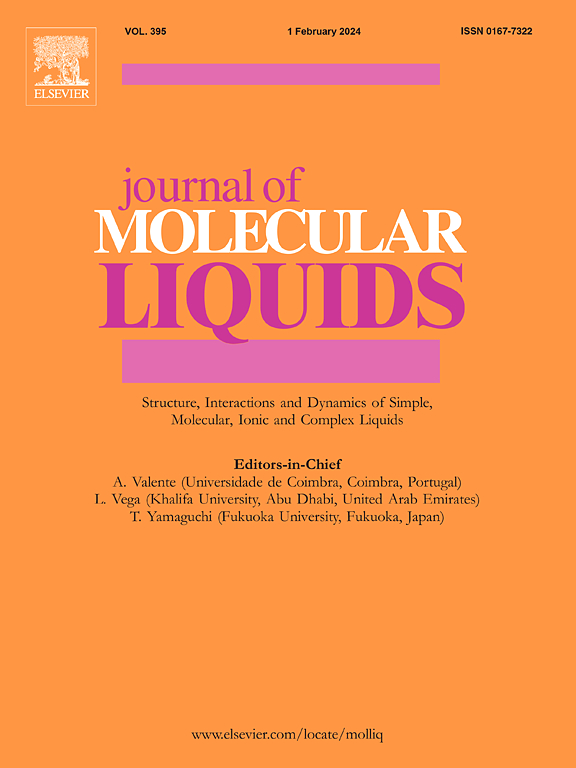Molecular dynamics simulation of CO2 in organic solvent and polymer–solvent solutions
IF 5.3
2区 化学
Q2 CHEMISTRY, PHYSICAL
引用次数: 0
Abstract
ScCO2 spray coating through blending CO2 with common coating solutions has become an environmentally friendly process in industrial spray coating application. Understanding the structural and diffusion properties of CO2 in solvents and polymer solution is important for ScCO2 spray coating. In this article, molecular dynamics simulation was performed to study the structural properties and diffusion coefficients in ScCO2-organic solvent binary mixtures and ScCO2-organic solvent-polymer ternary mixtures. The density of mixture is increased with increasing the mass fraction of CO2 for most of studied solvents and the solubility parameter of the binary mixtures decreased approximately linearly. Furthermore, using poly(methyl methacrylate/n-butyl acrylate) [P(MMA/nBA)] as coating resin, the microstructures and interactions of CO2, organic solvents and polymer in ternary mixtures were investigated through the diffusion and radial distribution function. It was found that the density and diffusivity of ternary mixtures also increased with increasing CO2 content. Moreover, the number of the replacement of solvent molecules by CO2 molecules is lower due to the higher interaction between n-butanol and [P(MMA/nBA)].
求助全文
约1分钟内获得全文
求助全文
来源期刊

Journal of Molecular Liquids
化学-物理:原子、分子和化学物理
CiteScore
10.30
自引率
16.70%
发文量
2597
审稿时长
78 days
期刊介绍:
The journal includes papers in the following areas:
– Simple organic liquids and mixtures
– Ionic liquids
– Surfactant solutions (including micelles and vesicles) and liquid interfaces
– Colloidal solutions and nanoparticles
– Thermotropic and lyotropic liquid crystals
– Ferrofluids
– Water, aqueous solutions and other hydrogen-bonded liquids
– Lubricants, polymer solutions and melts
– Molten metals and salts
– Phase transitions and critical phenomena in liquids and confined fluids
– Self assembly in complex liquids.– Biomolecules in solution
The emphasis is on the molecular (or microscopic) understanding of particular liquids or liquid systems, especially concerning structure, dynamics and intermolecular forces. The experimental techniques used may include:
– Conventional spectroscopy (mid-IR and far-IR, Raman, NMR, etc.)
– Non-linear optics and time resolved spectroscopy (psec, fsec, asec, ISRS, etc.)
– Light scattering (Rayleigh, Brillouin, PCS, etc.)
– Dielectric relaxation
– X-ray and neutron scattering and diffraction.
Experimental studies, computer simulations (MD or MC) and analytical theory will be considered for publication; papers just reporting experimental results that do not contribute to the understanding of the fundamentals of molecular and ionic liquids will not be accepted. Only papers of a non-routine nature and advancing the field will be considered for publication.
 求助内容:
求助内容: 应助结果提醒方式:
应助结果提醒方式:


